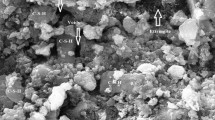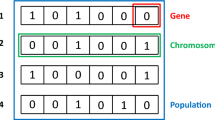Abstract
Due to the important role of concrete in construction sector, a novel metaheuristic method, namely whale optimization algorithm (WOA), is employed for simulating 28-day compressive strength of concrete (CSC). To this end, the WOA is coupled with a neural network (NN) to optimize its computational parameters. Also, dragonfly algorithm (DA) and ant colony optimization (ACO) techniques are considered as the benchmark methods. The CSC influential parameters are cement, slag, water, fly ash, superplasticizer (SP), fine aggregate (FA), and coarse aggregate (CA). First, a population-based sensitivity analysis is carried out to achieve the most efficient structure of the proposed model. In this sense, the WOA-NN with the population size of 400 and five hidden nodes constructed the best-fitted network. The results revealed that the WOA-NN (Error = 2.0746 and Correlation = 0.8976) presents the most reliable prediction of the CSC, followed by the DA-NN (Error = 2.5138 and Correlation = 0.8209) and ACO-NN (Error = 2.8843 and Correlation = 0.8000) benchmark models. The findings showed that utilizing the WOA optimization technique, along with typical neural network, results in developing a promising tool for modeling the CSC.











Similar content being viewed by others
References
Mandal S, Shilpa M, Rajeshwari R (2019) Compressive strength prediction of high-strength concrete using regression and ANN models, sustainable construction and building materials. Springer, New York, pp 459–469
Henigal A, Elbeltgai E, Eldwiny M, Serry M (2016) Artificial neural network model for forecasting concrete compressive strength and slump in Egypt. J Al Azhar Univ Eng Sector 11:435–446
Abdalhmid JM, Ashour AF, Sheehan T (2019) Long-term drying shrinkage of self-compacting concrete: experimental and analytical investigations. Constr Build Mater 202:825–837
Thirumalai C, Chandhini SA, Vaishnavi M (2017) Analysing the concrete compressive strength using Pearson and Spearman. IEEE, Middlesex
Moayedi H, Hayati S (2018) Artificial intelligence design charts for predicting friction capacity of driven pile in clay. Neural Comput Appl 31:1–17
Moayedi H, Hayati S (2018) Modelling and optimization of ultimate bearing capacity of strip footing near a slope by soft computing methods. Appl Soft Comput 66:208–219
Seyedashraf O, Mehrabi M, Akhtari AA (2018) Novel approach for dam break flow modeling using computational intelligence. J Hydrol 559:1028–1038
Gao W, Guirao JLG, Basavanagoud B, Wu J (2018) Partial multi-dividing ontology learning algorithm. Inf Sci 467:35–58
Vakhshouri B, Nejadi S (2018) Prediction of compressive strength of self-compacting concrete by ANFIS models. Neurocomputing 280:13–22
Falade F, Iqbal T (2019) Compressive strength Prediction recycled aggregate incorporated concrete using adaptive neuro-fuzzy system and multiple linear regression. Int J Civ Environ Agric Eng 1:19–24
Ling H, Qian C, Kang W, Liang C, Chen H (2019) Combination of support vector machine and K-fold cross validation to predict compressive strength of concrete in marine environment. Constr Build Mater 206:355–363
Naderpour H, Rafiean AH, Fakharian P (2018) Compressive strength prediction of environmentally friendly concrete using artificial neural networks. J Build Eng 16:213–219
Khademi F, Jamal SM (2017) Estimating the compressive strength of concrete using multiple linear regression and adaptive neuro-fuzzy inference system. Int J Struct Eng 8:20–31
Keshavarz Z, Torkian H (2018) Application of ANN and ANFIS models in determining compressive strength of concrete. Soft Comput Civ Eng 2:62–70
Nguyen H, Mehrabi M, Kalantar B, Moayedi H, MaM Abdullahi (2019) Potential of hybrid evolutionary approaches for assessment of geo-hazard landslide susceptibility mapping. Geomat Nat Hazards Risk 10:1667–1693
Moayedi H, Mosallanezhad M, Mehrabi M, Safuan ARA, Biswajeet P (2019) Modification of landslide susceptibility mapping using optimized PSO-ANN technique. Eng Comput 35:967–984
Moayedi H, Mehdi R, Abolhasan S, Wan AWJ, Safuan ARA (2019) Optimization of ANFIS with GA and PSO estimating α in driven shafts. Eng Comput 35:1–12
Zhang X, Nguyen H, Bui X, Tran Q, Nguyen D, Bui D, Moayedi H (2019) Novel Soft Computing Model for Predicting Blast-Induced Ground Vibration in Open-Pit Mines Based on Particle Swarm Optimization and XGBoost. Nat Resour Res 28:1–11
Dou J, Bui DT, Yunus AP, Jia K, Song X, Revhaug I, Xia H, Zhu Z (2015) Optimization of causative factors for landslide susceptibility evaluation using remote sensing and GIS data in parts of Niigata, Japan. Plos One 10:e0133262
Dou J, Yunus AP, Bui DT, Merghadi A, Sahana M, Zhu Z, Chen C-W, Khosravi K, Yang Y, Pham BT (2019) Assessment of advanced random forest and decision tree algorithms for modeling rainfall-induced landslide susceptibility in the Izu-Oshima Volcanic Island, Japan. Sci Total Environ 662:332–346
de Almeida Neto MA, Fagundes RdAdA, Bastos-Filho CJ (2018) Optimizing support vector regression with swarm intelligence for estimating the concrete compression strength. Springer, New York
Behnood A, Golafshani EM (2018) Predicting the compressive strength of silica fume concrete using hybrid artificial neural network with multi-objective grey wolves. J Clean Product 202:54–64
Bui D-K, Nguyen T, Chou J-S, Nguyen-Xuan H, Ngo TD (2018) A modified firefly algorithm-artificial neural network expert system for predicting compressive and tensile strength of high-performance concrete. Constr Build Mater 180:320–333
Sadowski L, Nikoo M, Nikoo M (2018) Concrete compressive strength prediction using the imperialist competitive algorithm. Comput Concrete 22:355–363
Moayedi H, Abdullahi MM, Nguyen H, Rashid ASA (2019) Comparison of dragonfly algorithm and Harris hawks optimization evolutionary data mining techniques for the assessment of bearing capacity of footings over two-layer foundation soils. Eng Computers 35:1–11
Moayedi H, Osouli A, Nguyen H, Rashid ASA (2019) A novel Harris hawks’ optimization and k-fold cross-validation predicting slope stability. Eng Comput 35:1–11
Xi W, Li G, Moayedi H, Nguyen H (2019) A particle-based optimization of artificial neural network for earthquake-induced landslide assessment in Ludian county, China. Geomat Nat Hazards Risk 10:1750–1771
Mirjalili S, Lewis A (2016) The whale optimization algorithm. Adv Eng Softw 95:51–67
Mafarja MM, Mirjalili S (2017) Hybrid whale optimization algorithm with simulated annealing for feature selection. Neurocomputing 260:302–312
Trivedi IN, Jangir P, Kumar A, Jangir N, Totlani R (2018) A novel hybrid PSO–WOA algorithm for global numerical functions optimization, advances in computer and computational sciences. Springer, New York, pp 53–60
Nasiri J, Khiyabani FM (2018) A whale optimization algorithm (WOA) approach for clustering. Cogent Math Stat 5:1483565
Rana N, Latiff MSA (2018) A Cloud-based Conceptual Framework for Multi-Objective Virtual Machine Scheduling using Whale Optimization Algorithm. Int J Innovative Comput 8:53–58
Kaveh A (2017) Sizing optimization of skeletal structures using the enhanced whale optimization algorithm, applications of metaheuristic optimization algorithms in civil engineering. Springer International Publishing, Cham, pp 47–69
Mirjalili S (2016) Dragonfly algorithm: a new meta-heuristic optimization technique for solving single-objective, discrete, and multi-objective problems. Neural Comput Appl 27:1053–1073
Colorni A, Dorigo M, Maniezzo V (1992) Distributed optimization by ant colonies. Proceedings of the first European conference on artificial life. Cambridge, MIT Press, Massachusetts, USA
Dorigo M, Blum C (2005) Ant colony optimization theory: a survey. Theoret Comput Sci 344:243–278
Dorigo M, Birattari M (2010) Ant colony optimization. Springer, New York
Mafarja MM, Eleyan D, Jaber I, Hammouri A, Mirjalili S (2017) Binary dragonfly algorithm for feature selection. IEEE, Middlesex
Ks SR, Murugan S (2017) Memory based hybrid dragonfly algorithm for numerical optimization problems. Expert Syst Appl 83:63–78
Yeh I-C (2007) Modeling slump flow of concrete using second-order regressions and artificial neural networks. Cement Concr Compos 29:474–480
Author information
Authors and Affiliations
Corresponding author
Ethics declarations
Conflict of interest
The authors declare no conflict of interest.
Additional information
Publisher's Note
Springer Nature remains neutral with regard to jurisdictional claims in published maps and institutional affiliations.
Rights and permissions
About this article
Cite this article
Tien Bui, D., Abdullahi, M.M., Ghareh, S. et al. Fine-tuning of neural computing using whale optimization algorithm for predicting compressive strength of concrete. Engineering with Computers 37, 701–712 (2021). https://doi.org/10.1007/s00366-019-00850-w
Received:
Accepted:
Published:
Issue Date:
DOI: https://doi.org/10.1007/s00366-019-00850-w




